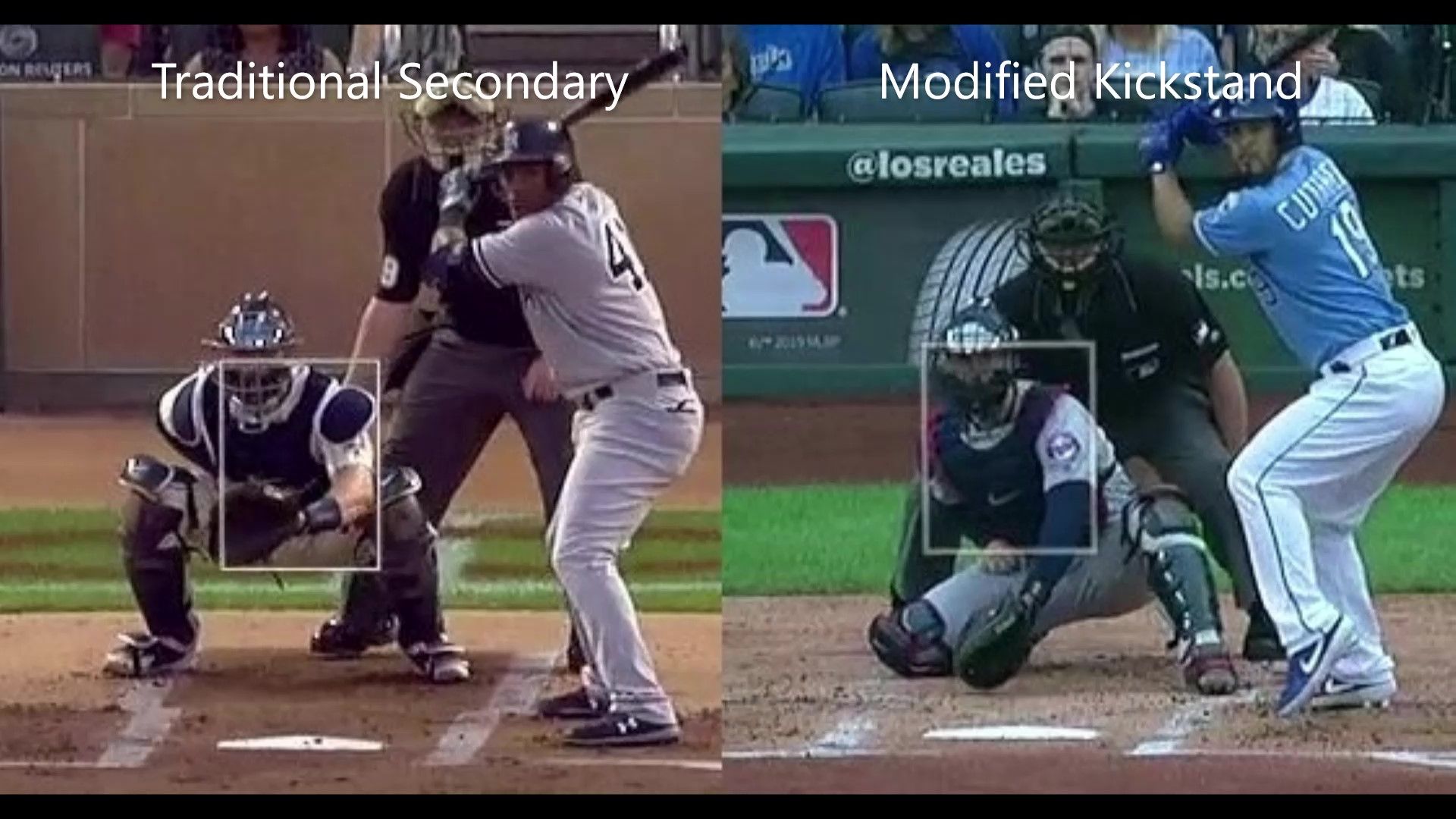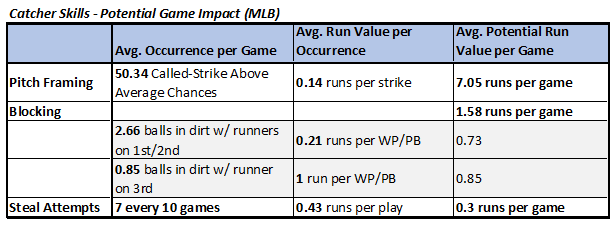Want more great
Catching Content?
Sign up for FREE and see everything we have to offer!
There has been a lot of buzz in the catching world recently about the Minnesota Twins organization and the one-knee system that Tanner Swanson (Twins Minor League Catching Coordinator) has been implementing. Not sure what I'm talking about? Take a look at the video below of Mitch Garver.

Summary of Conclusions
While the data collected is limited to a small sample size and by no means conclusive for all situations and pitchers, it does give us some starting guidelines of when to use one-knee vs traditional stances as we continue to evaluate and gather more data on the impact of each stance at the high school level.
The Study
There are 3 main skills that a catcher utilizes to impact a game. Receiving (pitch framing), blocking, and throwing. Each one of these skills, whether executed successfully or not, has an impact on the outcome of a game. One-knee stances help improve a catcher’s receiving on bottom-zone pitches and can increase how many of those pitches end up being called strikes.

Catcher Skills at the HS Level

Weaker blocking seems to be the main argument I hear against staying on one-knee with runners on base, and it’s certainly true that lateral range is limited while in a one-knee stance. What we have found is that most catchers block significantly better on dirt balls within the catcher’s box from a one-knee modified kickstand stance.
Wide Misses with One-Knee Stances


While throwing out would-be base stealers represents less than 1 run per game at the high school level, maintaining the threat of throwing out base runners remains important. If the threat of being thrown out doesn’t exist, base runners will steal more often and the associated run value does become important.

Summary of Conclusions
Unlike MLB, pitch framing and blocking have a similar impact to game outcomes at the high school level. Because of this, high school catcher’s must optimize both receiving and blocking to maximize run prevention. The right-knee-down modified kickstand stance appears to optimize receiving and blocking within the catcher’s box, but is weak against wide misses outside the catcher’s box. A traditional secondary stance maximizes blocking wide misses, but is weaker with receiving and blocking high velocity pitches.
The findings of this study appear to indicate that neither remaining in a traditional secondary stance full time with runners on base nor a modified kickstand full time with runners on base will result in maximal run prevention for high school games. Rather, a mix of both stances will be required depending on pitcher, pitch type, and base state.
In order to develop basic guidelines of when to use each stance, I focused on 2 variables. Pitch velocity and the ratio of borderline strikes to wide misses in the dirt.
First, pitch velocity. For pitches greater than 80mph the traditional secondary stance was no more effective at blocking wide misses than the right-knee-down modified kickstand stance. At these velocities the right-knee stance offers better overall blocking performance and receiving regardless of how wild the pitcher may be. For this reason, I recommend to utilize the right-knee-down stance for all pitch types greater than 80mph regardless of what bases are occupied.
For pitches less than 80mph I suggest using the ratio of borderline pitches to wide misses to determine the most appropriate stance for each pitch type of each pitcher. This ratio was chosen to help ensure our selected stance is most likely to maximize run prevention. By assuming the strike conversion rate on borderline pitches will increase by 25% when using a RKD stance and the success rate on wide blocks will decrease by 55%, we get the following guidelines for pitches less than 80mph:
- Runners on 1st or 2nd, but not 3rd: 3 or more borderline pitches for every 1 wide miss in the dirt = use RKD stance
- Runner on 3rd: 16 or more borderline pitches for every 1 wide miss in the dirt = use RKD stance
*It is worth noting that we are comparing the ratio of borderline pitches to WIDE misses in the dirt, not all pitches in the dirt or wide misses in the air.
By following these guidelines we are increasing the chances that we only use the RKD stance when it is most likely to prevent more runs through receiving than given up by missed wide blocks.
The simplified guidelines listed at the beginning of this article represent an “average” high-school pitcher. Many varsity pitchers may be accurate enough with offspeed pitches where the RKD stance may be beneficial with a runner on 3rd.
Assumptions Used in Determining Guidelines
Because of the limited data set and lack of pitch tracking technology at the high school level several assumptions were used to determine the guidelines detailed above.
- 25% more borderline pitches will be called strikes with a RKD stance. Without pitch tracking technology and umpire tendencies it is difficult to quantify the actual framing runs at the high school level. 25% was chosen as a realistic expectation based on visual feedback from games.
- There are no swing attempts on borderline pitches.
- Successful blocks on wide misses in the dirt will reduce by 55% when going to a RKD stance. (based on 70% success rate in traditional stance, and 15% success rate in RKD).
- Average run values of strikes and WP/PB remain the same as MLB.
Want more great
Catching Content?
Sign up for FREE and see everything we have to offer!


